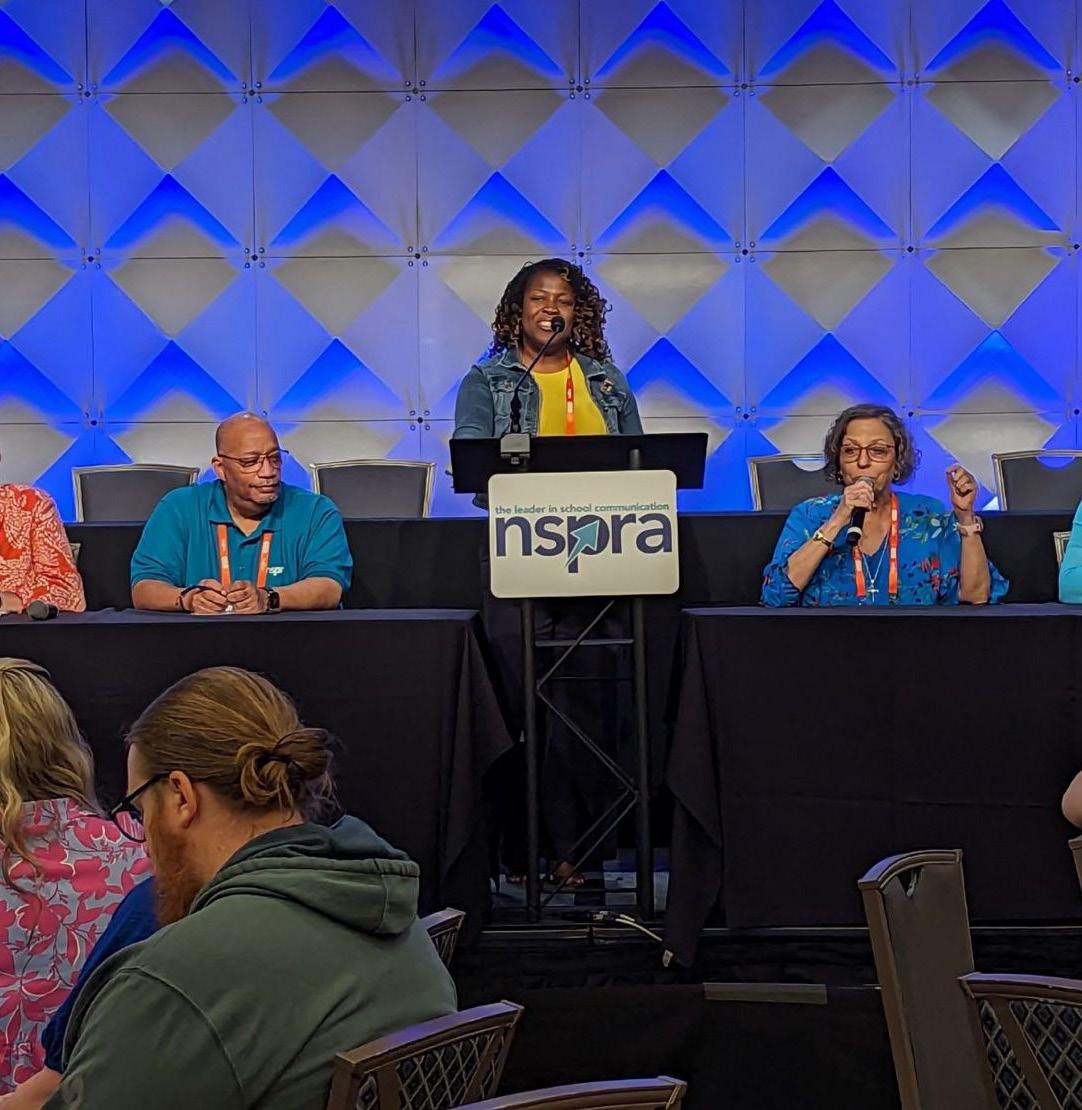
4 minute read
Community Problem – Community Solution
Nicholas Caruso Sr. Staff Associate for Field Services and Coordinator of Technology, CABE
Several times over the last few weeks I’ve been asked to work with boards facing potentially difficult scenarios. In most cases, the issues had to do with outdated or under-used facilities.
Advertisement
Declining student enrollment has caused some districts to operate schools that are not at full capacity. Boards of education are spending a greater percentage of their budget to pay for under-utilized facilities that take away resources from student-focused programs. In some communities, this is a recurring problem that never gets solved. The board studies the situation, brings forth a plan (often either changes to the governance structure or recommending the closing of one or more schools) and sees the plan fail in referendum. The political fallout may cost the superintendent his or her reputation or job, and the board is forced to continue to spend more of the limited budget on buildings at the expense of academic programming. People may become reluctant, remembering past failures, to resurface the issue even as it is exacerbated over time.
There are some practices that may ensure success.
Community Problem, Community Solution
Approach this as a community problem, not strictly one for the board of education. The board needs to develop partners who have an interest in the schools and see the success of the changes as benefitting the town and possibly their own agendas. You cannot discount the emotional capital of alumni or a town identity wrapped up in the schools, particularly when the changes might mean the closing of a popular school or perhaps the only town-wide facility in that area of town. It’s safe to say that many referendums involving school closings fail more for
See You In Court
(continued from page 4) coordinator, must develop, and update each year as necessary, a “school climate improvement plan” for that school. The school climate improvement plan must be based on the results of a required school climate survey, as well as any recommendations from emotional reasons than financial ones. Often such plans involve renovations or new schools which will require major capital projects. People will argue about the money, but if the value of the changes is demonstrated, they may be more likely to be accepted. In fact, capital projects often reduce operating expenses equal to or greater than the investment to rebuild the schools.
Follow a Process
Follow a process even when the solution seems obvious to those in the know. Start with building consensus about what the problem actually is. If people disagree about the problem, they will surely disagree on the solution. The board might consider convening meetings with other key players such as selectmen, town council, finance board, parent groups, and other community members. The board should make certain all the key constituencies are represented.
A community that struggled with an outdated high school had several referenda fail over the years. When the boards of education, selectmen, and finance met in a series of problem-solving meetings, they developed a mutually supported project that passed.
Who Should Be at the Table?
Potential questions to ask to help identify the right participants:
• Who has a vested interest?
• Who benefits by a change?
• Who is potentially harmed by a change?
You can use focus groups as an alternative if large meetings with multiple participants won’t work in your community.
Working with the superintendent, the board should share relevant data that helps define the problem. The story you tell must be compelling and sensitive to the emotional bond some will have with the existing facilities and then listen!
More important than just listen- ing, get community members to help articulate the root cause of the problem. Then use these same people to discuss potential solutions, but only once there is agreement on what the actual issue is. Communities that have used this strategy may have an easier time getting a plan passed through the deliberative process, whether it is through other municipal boards or a town/region-wide referendum.
Most Importantly - Focus on Academic Needs First
If your district has a strategic plan (or other academic goals), take the time to share it with your community and elaborate on how the plan is already helping improve achievement in your district. Make sure the community understands how the issues of governance or facilities are compounding the problems instead of helping them. Make sure you clear- ly align the recommendations with your long-term goals and/or strategic plan. Sharing data, both academic and financial, is important; but equally important is how you share the narrative with the community in a way that people can identify with on an emotional level.
A Final Thought
Don’t make the superintendent the facilitator of this process. Let him or her be a resource to help the community understand the issues the being faced. Making the superintendent become the face of the proposal and the primary voice for change may not be a benefit down the road for the superintendent.
CABE staff have facilitated such processes numerous times over the years and can be a resource. Contact Nicholas Caruso, ncaruso@cabe.org, if you have any questions.
the school climate committee, and any other data the school climate specialist and school climate coordinator deems relevant. The school climate improvement plan must include the required protocols and supports prescribed in great detail in section 71 of Public Act 23-167. Once the plan is approved, it must be provided to the “school community,” now a defined term, and it must be used in “the prevention of, identification of and response to challenging behavior,” as defined by Section 47(16) of Public Act 23-167.
Finally, we end by noting that Goody’s email and the Committee member responses violated the FOIA. Those emails constituted a discussion of Board business that should have occurred at a posted meeting.









